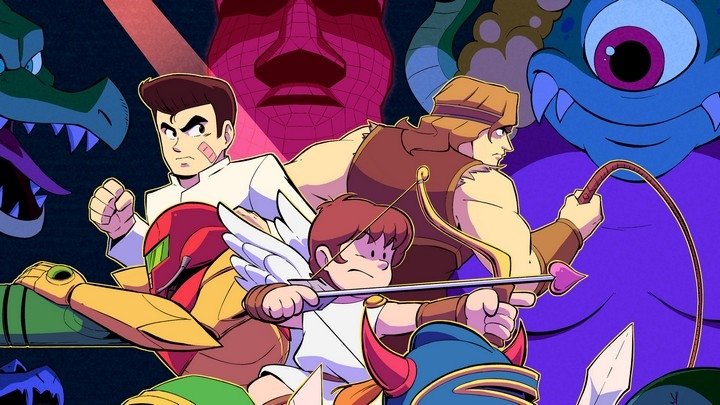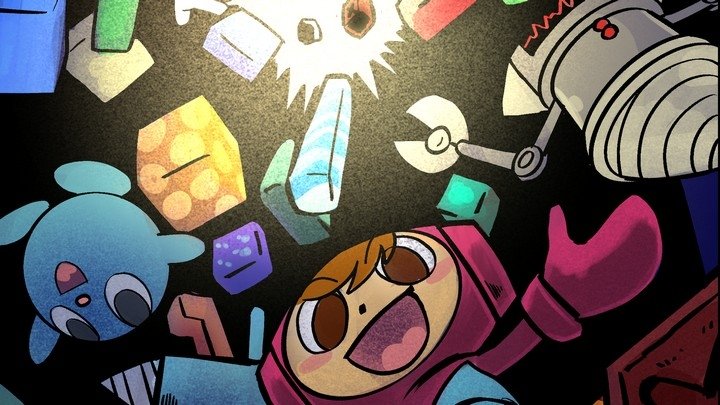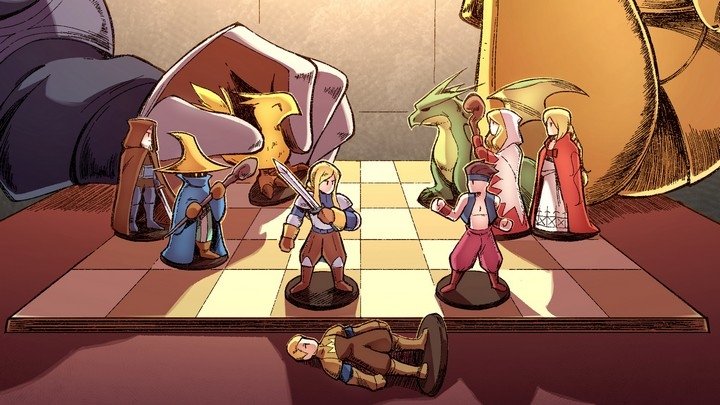Super NES Mini Countdown: #14 | Secret of Mana
The Final Fantasy spinoff that learned to stand on its own merits (along with the power of friendship)
Nintendo's Super NES Classic Edition mini-console arrives at the end of the month, and the Retronauts writing team has voted to rank the 20 classic games on the mini. Unlike last year's Classic NES Edition, the Super NES mini doesn't have a single dud on it, so think of this as a countdown from good to great. Today, an action-RPG that really means it.
Previous entries:
- 20. Super Punch-Out!!
- 19. F-Zero
- 18. Kirby's Dream Course
- 17. Donkey Kong Country
- 16. Star Fox
- 15. Super Mario RPG
14. Secret of Mana
Dev.: Squaresoft
Publisher: Squaresoft
Genre: Action-RPG
Release date: Aug. 1993 [Japan] Dec. 1993 [U.S.] Nov. 1994 [EU]

What makes Secret of Mana a worthy inclusion?
It's action, and it's RPG
The action-RPG genre has been around since at least 1979, when Atari's Adventure compressed Colossal Cave Adventure into a game that could work with simple, blocky graphics and a single command button. Most action-RPGs to follow, including the most influential one (Nintendo's The Legend of Zelda), followed a similar streamlined format. Much less common were the action-RPGs that attempted to incorporate proper RPG mechanics, such as full leveling systems. Secret of Mana, however, went all-in: Not only did it give players a leveling system, it gave them dozens of different stats to grind experience for: Three characters, eight weapons apiece for each, and eight spell classes for two of the party members, all leveled individually. Numbers!
Action-RPG, part deux
Not only does Mana give you lots of numbers to crunch — which, really, isn't the true essence of role-playing in its purest form — it also gives you something far more important: A party of heroes. No more solo protagonist. Mana's predecessor, Final Fantasy Adventure, made a furtive stab at giving the player companions with a string of temporary allies who appeared throughout the quest, but Mana goes all-in. By the time you've completed the first couple of hours, the plucky hero also has a lady companion and a rowdy demihuman as permanent allies, each with their own unique skills, inventory, and attributes.
It's dangerous to go alone
Of course, in an action-RPG, you can't control all three heroes. You can fine-tune how the artificial intelligence guides your party members… or you can just have a friend join in. Or two friends: With a multi-tap connector, three people could tackle Mana, each in control of their own character. The Super NES Classic Edition ships with two controllers out of the box, so it'll retain at least some of the intended multiplayer design (though if Nintendo has addressed the problem of getting a third player in on the action, I've yet to read about it).
One ring to bind them
Squaresoft's designers put a lot of thought into the question of how to combine the depth of a proper role-playing game with the brisk pace of a multiplayer action game. RPGs require menus, but a game where one person or another constantly toggles to a sub-screen would destroy the flow of a play session. The solution: Ring menus, a simply icon-based pop-up that grants players quick, individual access to spells, equipment, and items. Any player can bring up their individual ring menu at any time to perform actions or make character adjustments, and while the action will freeze momentarily while the ring is up, the process feels far less intrusive than a standard menu system would. It's brilliant, elegant interface design at work.
A sensual feast
And boy, does the game look and sound great. For me, Mana constituted the first time I ever looked at an RPG and said, "Man, this has nice graphics." Lush, colorful visuals that feature far more detail than you find in the typical tile-based role-players of the era helped set Squaresoft on a path of pushing for ever-greater visual fidelity... and, in this case, they result in a game world that looks like no other. Meanwhile, the incredible score by Hiroki Kikuta sounds like no other game world, running the gamut from gentle harpsichords to intense gamelan percussion. Sure, the graphics look their age, but they're still lovely.
Interesting facts about Secret of Mana
From CD to seedy
Nintendo intended to meet the competition head-on in the early ’90s by creating a CD-ROM add-on for Super NES in collaboration with Sony. That project famously collapsed, but it got far enough along that several publishers had quite a few games in development for it. Secret of Mana was one of them. Unlike many other CD-specific projects, though, Mana wasn't canned outright; it was simply crammed into a cartridge. According to localizer Ted Woolsey in an old Nintendo Power interview, you can see signs of the platform shift where content has been removed… and then there are all those glitches….
Quick turnaround
Speaking of localization, Woolsey cites his work on Mana as a personal regret — not because it was poor, but because the localization process was so rushed. He had very little time to edit the game into English thanks to the unusually abbreviated turnaround time from Japanese the English release (three months versus the usual nine to 12 months for Square RPGs). For some of the project, he was localizing text as the Japanese version was being written, forcing him to revise his own edits on a daily basis. He estimates that nearly half the content — not to mention nuance — of the original Japanese script ended up not making it into the U.S. release.
Final no more
In Japan, Secret of Mana was Seiken Densetsu 2 (Legend of the Holy Sword 2), a sequel to the game we knew here as Final Fantasy Adventure. The Final Fantasy Adventure title was 100% accurate: Squaresoft created it as a spin-off of Final Fantasy, and series mainstays (like red mages and standard Final Fantasy spell classes) showed up throughout. With Mana, though, the series branched off on its own and became very firmly its own distinct entity. Which isn't to say the Final Fantasy connection disappeared entirely; one of Mana's status conditions turns heroes into moogles, those cute little mole-bat critters.
Lovely lady lumps
Nintendo worked hard to bowdlerize U.S. releases of Japanese games, scrubbing out any and all references to sex, religion, and alcohol. Sometimes, though, things slipped through the cracks. Mana, for example, features an enemy late in the game that takes the form of a haunted book called the National Scar. Every once in a while, the book will pause and flip through its pages… and sometimes, those pages happen to land on a centerfold of a naked lady. We'll be interested to see if Nintendo scrubs that out for the Super NES mini reissue.
Assigned names
The game doesn't give the heroic playable trio fixed names, and neither does the U.S. manual. The Japanese, manual, however, gave the boy, girl, and sprite canonical names: Randi, Primm, and Popoi, respectively. With the upcoming PS4 and Vita remake, these names are now public and official in English.
Final statement
Throughout the late ’80s and into the early ’90s, Squaresoft frequently collaborated with a skilled Iranian programmer by the name of Nasir Gebelli. Thanks to Gebelli, some of the company's more impressive ambitions came to fruition, most notably the forward-scrolling graphics of 3D World Runner and Rad Racer, both of which supported stereoscopic 3D visuals. It's hardly a surprise that the company would summon Gebelli to help out with a groundbreaking technical effort like Mana, then — that three-person simultaneous real-time play must have been tricky to pull off. Interestingly, Mana would be Gebelli's final original game credit. After wrapping production on the project, he essentially disappeared from the public eye, reputedly retiring on his royalties from games he created... including the first few Final Fantasy titles.




